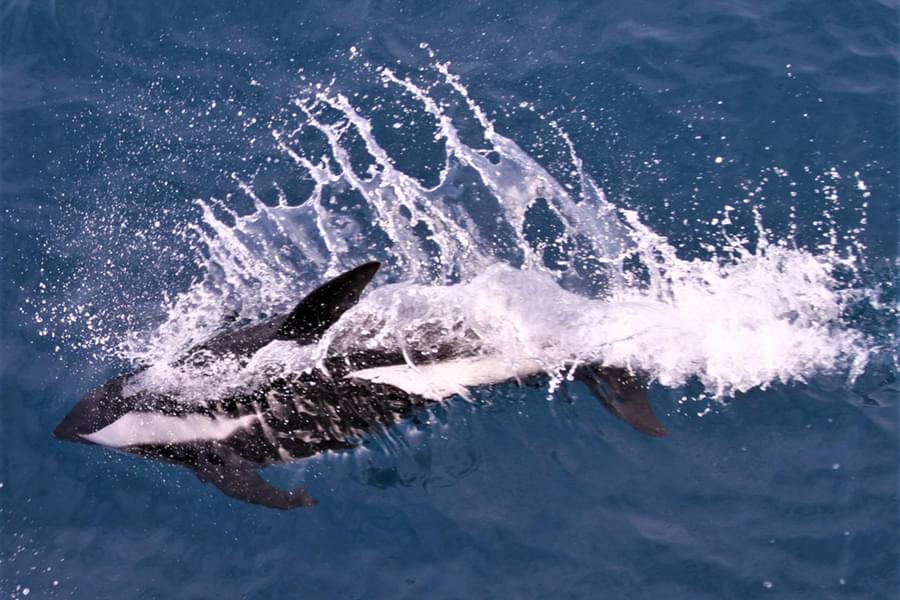Hourglass dolphins in Antarctica - a first for ORCA!
During an amazing trip to Antarctica on the Hurtigruten Expeditions MS Fram, Ocean Conservationist Andy has been able to add a new species to ORCA’s dataset!
Whilst sailing through a wonderfully calm Drake Passage earlier this week, the ship came across a large group of feeding hourglass dolphins with some individuals from the pod breaking away to come and say hello. This was a fabulous welcome for the new group of guests on board heading to Antarctica for the trip of a lifetime and a first-ever sighting of the species for ORCA!
There is still very little known about hourglass dolphins. They were first described as early as 1824, and are listed as least concern by the IUCN, however, they are very rarely seen.
Hourglass dolphins can be found in remote Antarctic and sub-Antarctic waters, spending the majority of their time in deep waters, however, they have been known to be seen in shallower waters close to land. It is thought they might make seasonal migrations, north in the winter and south in the summer. The northernmost confirmed sighting was in Valparaíso Chile, but this was exceptional.
Hourglass dolphins are small oceanic dolphins with striking black and white hourglass patterned bodies. They have a short stubby beak and a tall distinctive hooked dorsal fin which is positioned centrally on the body; they are the only small oceanic dolphin found in southern polar waters to have a fin such as this.
Hourglass dolphins are commonly seen in groups of 10 - 15 individuals, but there have been records of pods containing 100 or more. They are fast swimmers reaching speeds of 22 km/h and are regularly seen bow-riding in the wake of fast boats.
Typically hourglass dolphins travel close to the surface of the water, with just the dorsal fin breaking the surface. They have a diet containing squid, crustaceans and lanternfish, a small mesopelagic fish.
Hourglass dolphins are threatened by pollution and climate change, but as a result of living so far away from human activity they are not affected by some of the other most common threats facing whales and dolphins. However, understanding more about the range and distribution of these animals is still important and we will be keeping our eyes peeled for more sightings during future surveys in this part of the world!

